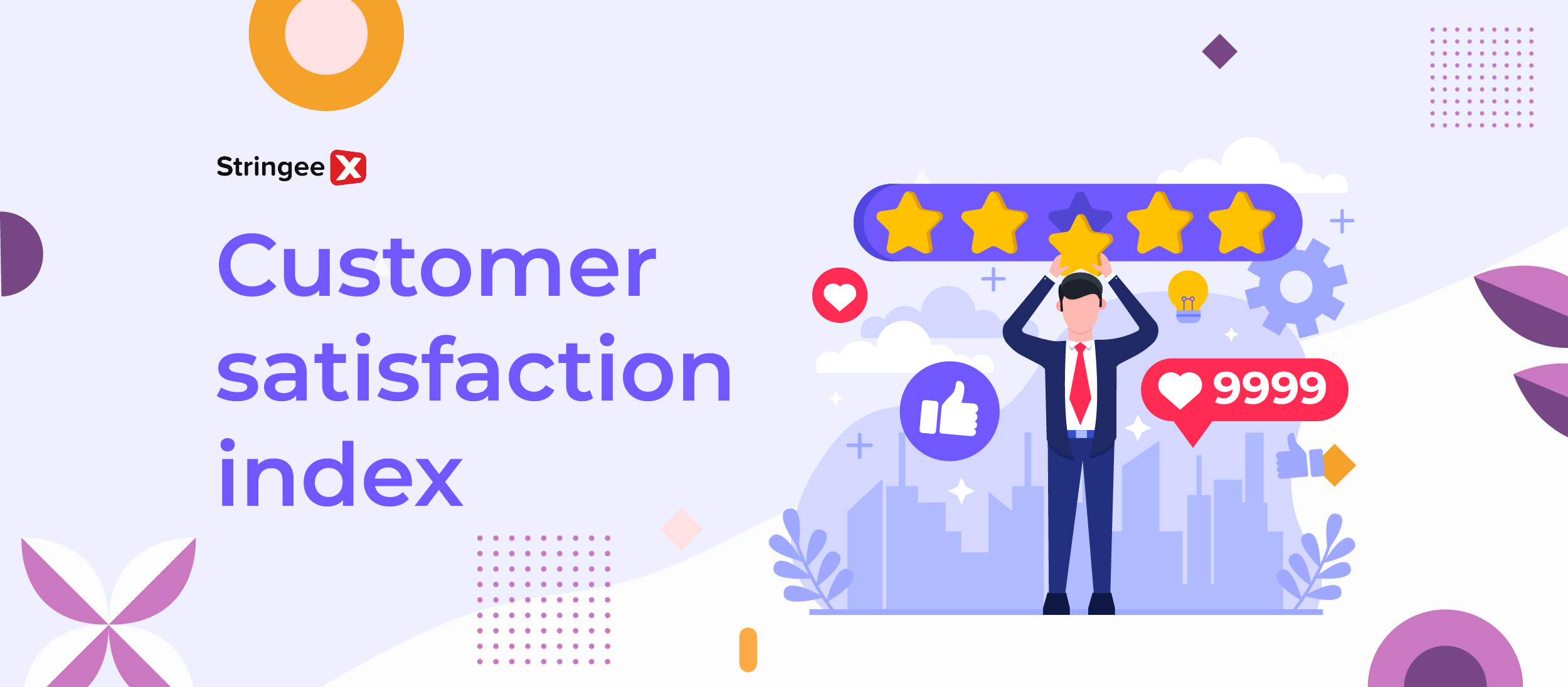Intro
It is true that customer happiness is the lifeblood of any business. So, how can you tell if your customers are actually happy with your service? The Customer Satisfaction Index (CSI) could prove helpful in this situation.
Customers’ feelings about your product or service are reflected through it. Therefore, nailing the CSI is a must-have if you want to increase sales, foster loyalty, and receive excellent feedback.
What Is the Customer Satisfaction Index?
The Customer Satisfaction Index (CSI) is a key metric that helps us measure how happy customers are with a company’s products or services. It not only just looks at overall satisfaction but also throws light on different aspects of the customer experience, like product quality, pricing, or after-sales care, which provides organisations with an all-around view of clients’ satisfaction.
The CSI frequently results from surveys in which customers rate their level of fulfilment on a scale. This feedback helps companies determine what they need to improve and make changes to satisfy customers. By regularly checking their CSI, businesses could adjust to meet their customers’ wants and needs better.
CSI measures how happy your customers are. Source: Needpix
Benefits Of CSI
Possessing a full understanding of valuable insights into customer needs is key for businesses to identify their pros and cons. So we are going to shed light on reasons why the CSI is crucial and how it benefits your business:
First and foremost, knowing how satisfied your customers are allows you to take steps to ensure they continue to be happy and loyal to your brand. Customers who are pleased with their experience are more likely to return.
As a result, the more satisfied your customers are, the more likely they are to recommend your business to others, helping to attract new customers and grow your revenue. The CSI is a great tool for spotting where your business needs work.
Issues may be promptly detected and resolved through the analysis of consumer input. This focused strategy ensures that you pay attention to the factors that have the most impact on client pleasure.
But that’s not all! The CSI also gives your company a major competitive edge by offering a clear view of how you stack up against rivals and industry standards. With the CSI maximised, you’re not just making your customers more convinced but also increasing their spending and raising your revenue. Is that a great deal?
Is CSI The Same As CSAT (Customer Satisfaction Score)
Not quite! While CSI and CSAT measure customer satisfaction, they focus on different things.
- CSAT is all about the here and now. It measures how happy a customer is with a specific experience, like how they feel after using a feature on your app.
- CSI, on the other hand, looks at the bigger picture. It gauges overall satisfaction across multiple parts of your business over time.
So, think of CSAT as a quick check-in, while CSI is more of a deep dive into your overall performance.
CSI and CSAT are not the same. Source: Pix4free
How to Calculate CSI
1. Figure Out How Many People to Survey
Consider selecting your responders. Once you know who you’re targeting, determine how many people you need to survey for solid feedback. For example, if you’ve got 1,000 active users, you might decide that hearing from 200 would give you a good picture.
Your goal is to ensure this group represents your whole customer base, making your CSI results more believable. Keep your survey short and sweet—ask clear questions like, How easy was it to find the book you wanted?
Then, choose the best way to send it out, maybe through an in-app message or a quick email. After you get the responses, take a moment to make sure everything’s accurate and complete.
2. Calculate the Total Score
Once you’ve got your responses, it’s time to add all the points. Imagine that 200 consumers answered your request to rate their experience on a scale of 1 to 10. If everyone’s total score is 1,600 points, that’s your starting number.
3. Find the Average Score
You can calculate the average score by dividing the total by the number of respondents. So, in this case, take your 1,600 points and divide it by 200 respondents, giving you an average score of 8.
5 Tips for Increasing Customer Satisfaction Index
First Impression Matter
You’ve heard it before: “First impressions matter.” This couldn’t be more true when it comes to your business. When a customer walks through your door, that first interaction sets the stage for everything that follows. If you start off on the right foot, keeping the experience positive is much easier.
Welcoming customers warmly, with genuine body language and sincerity, is a good start. Most of the time, ask open-ended questions about why they’re visiting. This shows that you truly desire to help them and makes them feel valued from the get-go.
Try to leave a positive first impression. Source: Wiki
Understand What They Need
The rule is simple: active listening is key here. It’s not just about hearing the words; it’s about truly understanding what your customer is saying. The best service advisors don’t just nod along—they pay close attention to verbal and non-verbal cues, like leaning in when a customer has a question.
StringeeX could assist you in this process. Our omnichannel contact centre makes it possible for businesses to efficiently manage and respond to customer inquiries directly from the platforms, ensuring that no message is missed.
Know Your Stuff
In fact, you’re the expert customers rely on. They come to you because they trust your advice. So, nothing is more crucial than knowing your shop’s offerings inside and out. The most essential part is being knowledgeable about the products and services you provide.
You should also keep in mind promotions or specials that may be of interest to your customers. Through this, your business could help your clients find exactly what they need and give them the best service possible by remaining knowledgeable and up-to-date.
There is a good idea: you can optimise your call centre. This is very helpful in that it offers a wealth of information for studying customers' standpoints and behaviour. Businesses can learn much about customer satisfaction levels by looking at call logs and customer reviews.
Sell The Value, Not Just The Service
We often see a common mistake: thinking that selling to customers will hurt your CSI. Here’s the thing: It’s your business to recommend the services they need based on your knowledge and experience.
Some customers may often be hesitant to make a purchase. If you show them the value and advantages of the service, you can turn them into committed, loyal clients. It is evident that when you don’t believe in what you’re recommending, doubt will creep in. So, make sure you’re confident in the value you’re providing.
Simplify Customer’s Decisions with a Service Menu
If your business doesn’t have a service menu, it’s time to make one. A well-organised menu makes it easy for customers to understand their options and choose what’s best.
Customers may feel more confident in their selections, and the decision-making process can be streamlined. A service menu can also be a useful tool that your employees can refer to when helping clients.
Conclusion
The Customer Satisfaction Index (CSI) is your secret weapon for converting pleased consumers into devoted followers. By knowing what it is, how to calculate it, and how to improve it, you can create a successful business.
Always remember that content customers make the best marketers, so take the time and effort to genuinely satisfy them.










